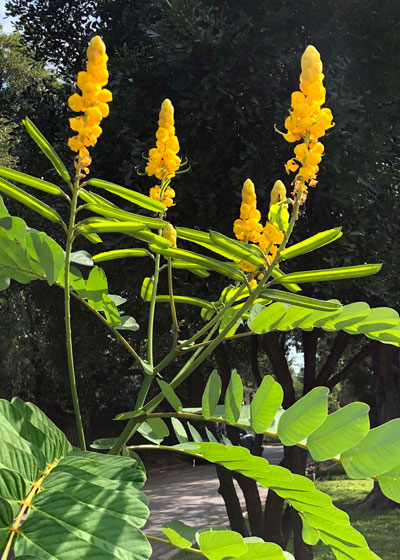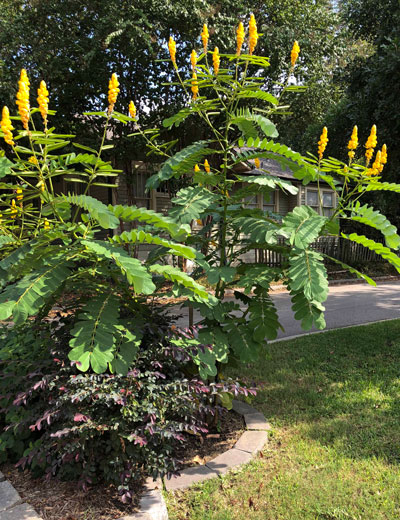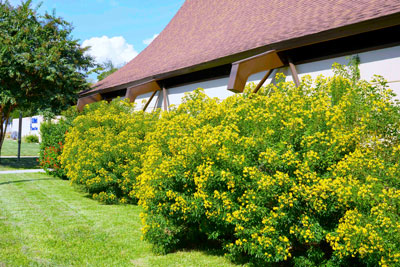Peak Season for Candletrees

It was 1960 and young Neil Sperry was trying every colorful plant he could get his hands on. If it was big and boisterous, so much the better. If it had showy flowers, that made it a sure winner.
About that time copper plants and candletrees were hitting the big time in Houston-area landscapes. I wore size 5-E shoes then as I do now (“duck-feet”), and that meant trips from College Station to Houston each fall to shoe me for school.
I saw these plants growing in the Houston parks and in many large home gardens as well and I fell in love. I started growing them in our own family gardens, and I used them adjacent to the houses I landscaped around College Station.
After a couple of years at Texas A&M I transferred to Ohio State and its huge floriculture department (more than 200 compared to fewer than 5 students at TAMU) and I lost track of my candletrees for a while.
After Lynn and I graduated, married and taught in northern Ohio for several years, we moved to Texas and I reunited with my old friend. By then it was much more mainstream and nurseries all across Texas were selling it (along with copper plants). Life was good.

But fads fade, and so did candletrees from our gardens. That’s partly because our gardens were shrinking. Candletrees are large annuals (to 6 or 7 ft. tall and wide) and our gardens were getting much smaller. And those trends have continued, to the point that you can go an entire season and never see your first candletree now.
That’s why I was pleasantly surprised to find this handsome specimen in full bloom while driving in an older part of McKinney last year. It looked right at home in that garden. It took me back to 1960.
If you want to have some of this tropical-looking beauty in your own backyard next year, start looking for seed over the winter. It may be listed by its old scientific name of Cassia alata, although more and more sources now show it as Senna alata. Most will call it candletree or candlebush.
Give it an early start by sowing the seeds in a pot filled with highly organic potting soil on a bright, warm windowsill in late February. Wait until a month or so after the last killing freeze to set your transplants out into the ground. Give the plants 4 or 5 feet of growing room, and plant them in full sun.
The only insects or diseases I’ve ever had bother my candletrees were an occasional outbreak of caterpillars. Spray with B.t. should you see such a population.

Another senna of note…
Flowery senna is a closely related species that is actually a woody shrub in the southern third of the state. It’s botanically Senna corymbosa. As with candletrees, it blooms in late summer and fall. It’s evergreen, growing to 6 to 8 ft. tall and wide. Like candletrees, it’s native to Argentina and other parts of South America.
I’m not about to move, but maybe in my next life I’ll live where this plant will be able to grow in my gardens. I love it, but it’s not happy with McKinney winters. My photo was taken at a church nearby, but those plants were hurt badly by a recent winter.
